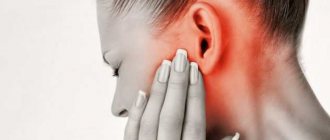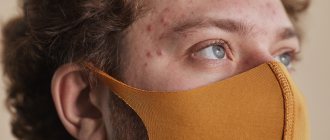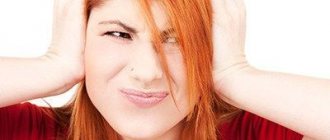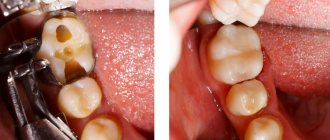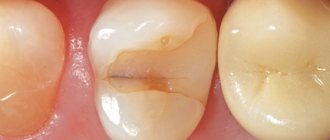Ear pain is a fairly common symptom. Painful sensations in this case give the patient a lot of unpleasant moments, and it is very difficult to simply “endure” such pain. It is noteworthy that pain in the ear is not always associated with diseases of the hearing organ. Such painful sensations can also be caused by other organs that radiate, that is, “giving off,” to the ear. A condition in which the ear hurts, but there is no inflammation in it, is called otalgia.
Otalgia can be caused by many reasons:
Temporal arteritis
The disease is an inflammation of the vessels of the temporal artery.
If the inflammatory process spreads to the ear artery, the patient will also experience pain in the ears. This disease is typical for older women. It causes blurred vision, headaches, pain in the temples, and increased fatigue. Make an appointment right now! Call us by phone or use the feedback form
Sign up
Along the branches of the vagus nerve, pain can radiate to the ear from the esophagus, thyroid gland, and organs of the cardiovascular system.
If you have ear pain, you should definitely consult with an otolaryngologist, since this condition may signal the presence of serious diseases in the body. If the ear is healthy, no abnormalities have been identified, and the pain does not go away, it is necessary to diagnose the nose, larynx, pharynx and, if necessary, other organs to identify the cause of otalgia. Further treatment will depend on the diagnosis.
Causes of ear pain
Otitis
Ear inflammation is the most common cause of pain in children and adults. Depending on the location and degree of damage, the pain can be shooting, dull, throbbing or bursting. Usually discomfort is felt on one side, but bilateral inflammation is also possible. The symptom is combined with headache, malaise, and fever. Otalgia manifests itself in various variants of the inflammatory process:
- Otitis externa.
Patients experience sharp pulsating pain that radiates to the lower jaw and neck. The discomfort is aggravated when talking, chewing food, and swallowing. Typical redness of the skin of the auricle and the visible part of the ear canal. Hearing is usually not impaired. - Otitis media
The disease manifests itself with sudden shooting pain in the ear, which periodically intensifies. The soreness lasts up to 3 days, then the pus comes out into the outer ear, and the unpleasant sensations become dull. Sometimes the symptoms are so strong that they interfere with sleep and work and are not relieved by analgesics. - Internal otitis (labyrinthitis).
The pathology is characterized by moderate pain in the ear and temporal area, and malaise. For labyrinthitis, attacks of dizziness and nausea are pathognomonic, which bother patients much more than pain. Hearing is often noticeably reduced.
Swimmer's ear syndrome (diffuse otitis externa) occupies a special place among the causes of pain. Otalgia is the main sign of pathology. Pulsating or shooting pains predominate, aggravated by pressing on the affected area or pulling the earlobe. Patients also complain of discomfort and distension in the external ear canal, and hearing impairment.
Eustachite
For inflammation of the auditory (Eustachian) tube, dull pain and discomfort on the affected side are typical. Patients describe their symptoms as a feeling of fluid in the ear, unpleasant bloating or stuffiness. Severe otalgia is observed with eustachitis caused by sudden changes in atmospheric pressure. A specific symptom of the disease is autophony - the feeling of resonance of one's own voice in the ear.
Earache
Foreign body
When large objects get into the ear canal, patients are bothered by bursting, severe pain that is felt constantly and does not decrease after using drops or painkillers. If a foreign body has sharp edges, in addition to pain, bleeding from the ear occurs or sudden pain occurs due to damage to the eardrum.
In addition to these symptoms, patients notice ear congestion and unilateral hearing loss. Dizziness and headaches appear less frequently. If an object is in the ear for a long time, an inflammatory process begins, during which the otalgia intensifies, the pain becomes shooting or throbbing. Mucopurulent exudate is released from the ear canal.
Ear injuries
When the auricle is damaged, sharp pain occurs on the affected side, which over time is replaced by dull or pulsating pain (with the formation of a hematoma). If the injury affects the ear canal, in addition to severe pain, bleeding and hearing loss similar to conductive hearing loss are observed. Damage to the eardrum is characterized by severe pain, which gradually subsides and is replaced by hearing loss and congestion.
Injuries to the middle and inner ear are often found in the structure of TBI, which determines the characteristics of clinical symptoms. Patients complain of excruciating pain, affecting not only the ear, but also the temporal region and mastoid process. Severe injuries cause excruciating headaches without clear localization. Typical ear bleeding, a sharp decrease or absence of hearing.
Ear tumors
Benign neoplasms are accompanied by otalgia only when they reach a significant size and compress the surrounding tissues. If the tumor is located near the eardrum, the patient is bothered by tinnitus and hearing loss. Burning pain is pathognomonic for malignant tumors. The pain is periodic at first; as the tumor grows, the intensity of the pain syndrome steadily increases.
Parotitis
In mumps, pain is localized mainly in the parotid region, the projection area of the affected salivary glands. Typically the pain extends to the ear. The clinical picture of the infection may resemble otitis media or eustachitis. Otalgia is felt more strongly when chewing and talking, palpating the affected area, the skin over which becomes tense and shiny. The most intense bursting pain occurs at night.
Neurological diseases
Neuralgia of the ear node is manifested by attacks of burning or throbbing unilateral pain, which is localized in the ear, as well as the area adjacent to it. Pain sensations radiate to the back of the head, neck, and temporomandibular joint. An attack of otalgia lasts from several minutes to one hour, after which all symptoms disappear. Paroxysms are provoked by changes in air temperature and humidity, and changes in barometric pressure.
With neuralgia of the glossopharyngeal nerve, the pain is localized mainly in the root of the tongue, but often it radiates to the ear. A painful attack is associated with chewing, coughing, and eating too hot or cold food. Otalgia is also observed with ganglionitis of the geniculate ganglion, which develops as part of a herpetic infection (Ramsay Hunt syndrome). Moderate dull pain in the ear occurs with cochlear neuritis.
Complications of pharmacotherapy
When using drugs with ototoxic effects, dull pain occurs, often of an intermittent nature. Along with otalgia, ringing, noise and whistling in the ears are disturbing, and hearing is deteriorating. Unpleasant symptoms intensify when the head is tilted in different directions or when the body turns sharply. Iatrogenic ototoxicity most often occurs with aminoglycosides, loop diuretics, and platinum derivatives.
Prevention
Preventive procedures involve eliminating factors that cause pathology:
- Identify and eliminate pathologies of the ENT organs in a timely manner, without leading to relapses.
- Do not use ototoxic drugs.
- Patients who constantly interact with complex production factors should undergo audiometry 2 times a year.
- We need a healthy lifestyle.
- Multivitamins should be taken in spring and autumn.
- Ears need to be covered with something in production where it is noisy.
- Use a hat in winter.
Treatment
Treatment of inflammatory ear diseases includes:
- antibacterial, antiviral agents of local and general action;
- antipyretics, analgesics;
- physiotherapy;
- in some cases - surgical intervention.
Treatment must be based on accurate diagnosis, which is impossible outside a specialized clinic. The high professionalism of CELT specialists allows us to identify various diseases of the hearing organ and choose the most effective means of solving the problem.
Make an appointment through the application or by calling +7 +7 We work every day:
- Monday—Friday: 8.00—20.00
- Saturday: 8.00–18.00
- Sunday is a day off
The nearest metro and MCC stations to the clinic:
- Highway of Enthusiasts or Perovo
- Partisan
- Enthusiast Highway
Driving directions
Treatment of external otitis
The goal of treatment is to stop the spread of infection and allow the ear canal to clean itself as it normally does.
- Cleaning and rinsing the ear canal. As a rule, the doctor cleans it with a curette to free it from skin particles, stuck earwax and dried discharge (serous or purulent). This is necessary so that the ear drops can spill to the entire depth of the ear canal.
- Ear drops prescribed by an ENT or general practitioner (GP). Usually these are drops with antibiotics and/or corticosteroids. For severe pain, analgesics can be used.
- If there is severe swelling of the external auditory canal, the doctor may first replace the drops with turunda soaked in medicine. When the swelling subsides, the turunda can be easily removed from the ear, and you can continue to be treated with drops.
- When instilling cold drops, hold them in your palm for a while to reduce discomfort. After the drops are in your ear, lie down on your healthy side for a few minutes so that the drops are better absorbed. You can ask someone to instill drops for you - this is more convenient.
- If the infection is widespread, the doctor may prescribe oral antibiotics in addition to drops.
How to prevent otitis externa?
- Gently blot the ear canal after bathing, but do not wipe the ear canal itself with anything.
- If water gets into your ear, you can shake it out by jumping on one leg and tilting your head to the same side. You can also dry the water in your ear with a hairdryer, setting it to the lowest setting and holding it about 30-40 cm from the ear.
- If you know your eardrum has been damaged or punctured, you can use ear drops that will prevent bacteria from growing in your ear once water enters the eardrum.
- Don't swim in dirty waters.
- Do not reach into the ear canal with a finger, a stick, a cotton swab or a swab - in a word, nothing.
- Protect your ears when using hairspray if you know it may irritate the skin inside your ear canal;
- If you have had ear surgery or ear infections, see an ENT before swimming.
Diagnosis of external otitis
Usually it is not difficult. Otitis externa is easily identified by its symptoms and the appearance of the ear and ear canal. The doctor may examine your ear with an otoscope. If he wants to make sure that the eardrum is intact, he can use a curette to clean the ear and take a deeper look.
If the otitis is diffuse, the doctor may need additional diagnostics of the condition of the middle ear, determining the nature of the otitis (bacterial or other), etc.
How to identify the factor that provoked the pain?
An otolaryngologist will be able to make an accurate diagnosis after examining the patient. Self-medication of an established diagnosis is life-threatening; it only aggravates the problem. It is forbidden to heat purulent otitis media, as this can provoke the development of complications.
What causes ear pain when chewing? The patient is examined using otoscopy, microotoscopy, audiometry, and acoustic impedansometry. Thanks to such diagnostic methods, it is possible to accurately identify the factor that provoked the appearance of pain during chewing. If necessary, the doctor will additionally examine the brain using MRI. If a bacterial process is observed, antibacterial treatment will be required, that is, a course of antibiotics. In some cases, specialists prescribe traditional medicine methods. It is necessary to use folk remedies strictly according to the recommendations of a specialist, otherwise health problems may arise.
Common diseases and symptoms
As medical practice shows, most often painful sensations appear with tonsillitis or sore throat. As such diseases progress, the pain intensifies while swallowing food. In this case, other symptoms also arise, namely:
- weakness;
- sore throat;
- poor appetite.
Painful sensations in the process of opening the mouth are diagnosed with “mumps,” a malignant formation in the larynx or other part of the mouth. With otitis media, pain occurs not only in the ears, but also in the jaw. In this case, it is not recommended to self-medicate, as this will only harm your health.
Diagnostics
The diagnosis and treatment of pathologies associated with this symptom is carried out by an ENT doctor (otorhinolaryngologist) or an audiologist (a narrower specialty in otorhinolaryngology). During the appointment, the specialist talks with the patient, examines him, conducts the necessary examination, and establishes a diagnosis.
The multidisciplinary CELT clinic employs experienced, highly qualified otolaryngologists. Rich clinical experience helps them make the correct diagnosis in the most difficult cases.
